Fire Department
The Huron East Fire Department is made up of three (3) stations located in Brussels, Ethel and Seaforth. The Fire Department is staffed by a full time Fire Chief, part time Fire Prevention Officer and many volunteer firefighters. The Fire Chief operates out of the Municipal Office in Seaforth.
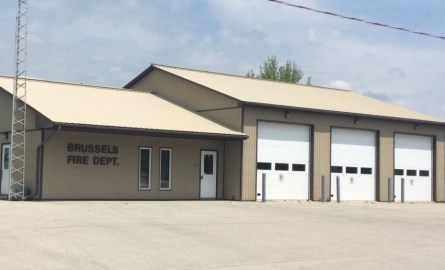
51 Cn Road
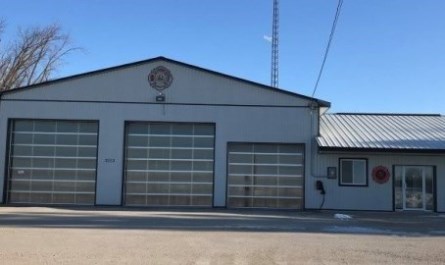
44358 Brandon Road
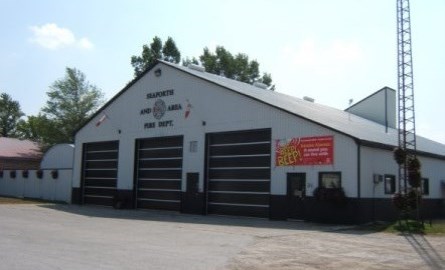
31 Birch Street
| Fire Department Services |
| The Huron East Fire Department provides fire protection services through a range of programs designated to protect the lives and properties of our residents we serve.
Fire protection includes fire suppression, fire prevention, fire safety education, communication, training of our firefighters, rescue and emergency services and the delivery of those services. |
| Joining the Huron East Fire Department |
|
If you are interested in joining the Huron East Fire Department, please click here for more information. Complete a Huron East Firefighter Application Form. |
| Notice to Property Owners who have Fire Alarms Monitored by an Outside Service |
| If your property has a fire alarm system which is monitored by an outside service like Innovative Security or Georgian Bay Fire and Safety, please ensure they have the proper phone number to call in case you need the fire department. These agencies monitor your alarm from outside our area and cannot just call 911, they need our dispatch phone number to call directly. Please call your provider and ask them what phone number they are using to call the fire department then contact us at 519-527-0160 to verify if it is correct. |
Fire Inspections
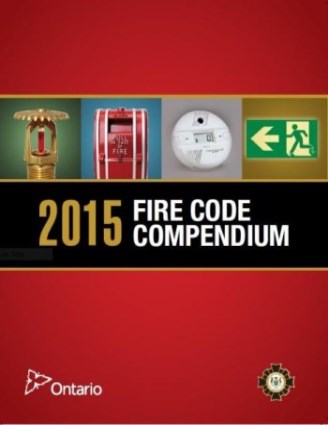
The Huron East Fire Department will conduct a fire inspection if:
- a complaint is received regarding the fire safety of a property
- a request is made to assist a property owner or occupant to comply with the Fire Code
How to book a fire inspection:
The Huron East Fire Department has a part time Fire Prevention Officer. They should be contacted regarding any fire inspections that need to be performed or if fire safety information is needed.
Michael Roess, Fire Prevention Officer
226-523-9500 ext. 201
Email Michael Roess
Please do not call 911 to request an inspection.
Click here for more information on Fire Safety Plan - Assembly Occupancy
Click here for more information on Fire Safety Plan - Tents and Temporary Structures
Open Air Burning Regulations
As per the 2015 Ontario Fire Code, Section 2.4.4.4. (1) Open air burning shall not take place unless
(a) It has been approved, or
(b) The open air burning consists of a small, confined fire that is
(i) Used to cook food on a grill, barbecue or spit,
(ii) Commensurate with the type and quantity of food being cooked, and
(iii) Supervised at all time.
Approval to burn in rural areas of Huron East is normally granted subject to the following conditions:
- All controlled burns must be reported to the Fire Department (519-527-0160 ext. 28) at least 2 hours prior to the burn. Please complete our Burn Permit Application Form online or call during regular business hours so we can inform our dispatch of the burn. Do not call 911. If you plan on burning during the weekend, please call the office on the Friday before to receive authorization.
- If you leave a voice message regarding your burn, please provide your name, 911 address, cell phone number, date of burn, start and end time of burn and what you are burning. You will only be contacted if there are problems regarding your burn. Please wait 1 to 2 hours before lighting your fire so we have time to process your request.
- The fire must be attended at all times by a competent person with a means to extinguish if required.
- Please be considerate of your neighbours. No one likes the obnoxious odours of a fire in their home. If complaints are received, you will be asked to put out the fire.
- Do not burn after dark.
- If the wind conditions are wrong for a burn, plan for another day.
- Avoid burning in periods of extreme dryness when grass and brush can accelerate a fire rapidly out of control.
- Burning materials that are environmentally harmful such as garbage, tires, treated wood and petroleum based products such as asphalt shingles and plastics is NOT permitted.
- The Fire Department has the right to inspect any controlled burn site before authorization to burn is granted.
If the Fire Department is called and any one of the above conditions is not met, they have been instructed to extinguish the fire. First time offenders are given a warning letter, if the fire department responds a second time the owner will receive an invoice for those services as per Huron East By-Law 011-2021, Schedule “B-1” – Protection Services, Fire Department Fees.
The Huron East Fire Department is not liable for any damages by giving permission to burn. The owner of the property must take full responsibility.
Smoke Alarms
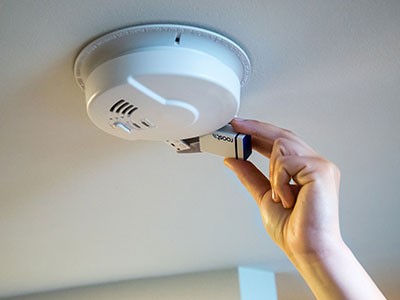
Install Smoke Alarms: It's The Law!
Every home in Ontario must have a working smoke alarm on every storey and outside all sleeping areas.
Homeowners: must install and maintain smoke alarms on every storey of their home and outside sleeping areas.
Landlords: must ensure their rental properties comply with the law.
Tenants: contact your landlord immediately if you do not have the required number of smoke alarms. It is against the law for tenants to remove the batteries or tamper with the alarm in any way.
Failure to comply with the Fire Code smoke alarm requirements could result in a ticket for $360 or a fine of up to $50,000 for individuals or $100,000 for corporations.
For more information on smoke alarms, visit the following websites:
National Fire Protection Association
Ontario Association of Fire Chiefs
Carbon Monoxide
| What is Carbon Monoxide? |
|
Carbon monoxide (CO) is a colorless, odorless, and tasteless gas that can be extremely dangerous, even deadly, when inhaled in high concentrations. It is often referred to as the "silent killer" because it can cause poisoning without any obvious warning signs. Carbon monoxide is produced by the incomplete combustion of fuels, such as gas, oil, coal, and wood, making it a concern in homes with appliances like stoves, furnaces, water heaters, and fireplaces. To prevent CO poisoning, it is a legal requirement to install carbon monoxide alarms in residential buildings outside sleeping quarters and ensure proper ventilation. |
| Carbon Monoxide Prevention & Safety Tips |
|
Carbon Monoxide Alarms: A Crucial Safety Tool The first line of defense against carbon monoxide poisoning is a reliable CO alarm. These devices are similar to smoke detectors, but they are specifically designed to detect the presence of carbon monoxide in the air. When CO levels in the home reach dangerous levels, the alarm will emit a loud sound to alert residents, allowing them to evacuate and seek fresh air before serious health effects occur. Carbon monoxide alarms work by sensing the amount of carbon monoxide in the air. Modern alarms often have a built-in digital display showing real-time CO levels, which can help individuals assess the severity of the situation. CO alarms should be installed on every floor of the home, especially near sleeping areas, to ensure that everyone can hear the alarm in the event of a CO buildup. It is important to test CO alarms monthly to ensure they are functioning properly, and the batteries should be replaced at least once a year. If an alarm goes off, it is vital to immediately vacate the premises and call emergency services to assess the situation. Additionally, if the CO alarm is over 5-7 years old, it is recommended to replace it, as the sensors may become less effective over time. Keeping Vents Clear: A Key to Preventing Carbon Monoxide Build-up A critical factor in preventing dangerous CO levels in the home is proper ventilation. Appliances that burn fuel, such as gas stoves, water heaters, and heating systems, require ventilation to safely release the carbon monoxide they produce. Keeping these vents clear is essential to ensure that CO does not build up inside the home. Blocked or obstructed vents can prevent exhaust gases from properly leaving the home, allowing carbon monoxide to accumulate indoors. Common causes of vent blockages include dirt, debris, leaves, snow buildup, and even bird nests. Homeowners should inspect vents regularly, especially during the colder months, when snow and ice are more likely to cause blockages. If vents become clogged, the risk of CO poisoning increases, as the gas may seep back into the living space. It is also important to ensure that chimneys and flues are clean and functioning properly. Regular maintenance, including annual inspections by a professional, can help identify potential hazards such as cracks, leaks, or obstructions that could lead to dangerous carbon monoxide exposure. Ensuring that all fuel-burning appliances are properly vented and maintained can significantly reduce the risk of CO buildup. |
| Exposure to Carbon Monoxide |
|
Exposure may cause:
|
Resources
Carbon Monoxide Alarm Regulations
Contact Us
Huron East Fire Chief - Marty Bedard
72 Main Street South, Seaforth, ON N0K 1W0
Phone: 519-527-0160 ext. 28
Toll-Free: 888-868-7513
Fax: 519-527-2561
E-mail this contact


 Subscribe to this page
Subscribe to this page